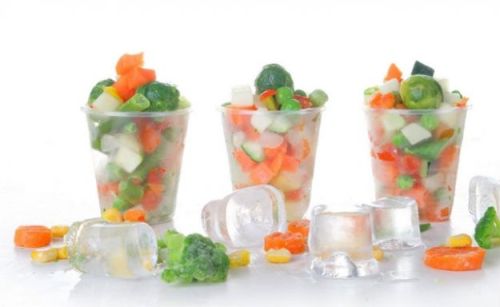How to preserve vitamins in food
Vitamins are one of the nutrients essential for any healthy and balanced diet. During the process of conservation, as well as the handling and preparation, you can lose some of them.
Everything will depend, as we shall see below, of how we will prepare the food. Come into play cooking techniques. This way, for example, when we cook the vegetables the heat does that vitamins get lost.
The amount depends on the type of cooking. Avoid long times cooking and temperatures, as well as more vitamins are lost. Also avoid adding baking soda to the cooking water, because although we think it improves the texture of the vegetables, the truth is that it takes vitamins.
By contrast, if the boiling we added a little lemon, vinegar and salt, vitamin loss is reduced. Vegetables should be al dente, avoiding too cook, passing by running cold water to remove from heat. No need to throw the cooking water because it has vitamins.
We can use it to make soups, broths and purees. Remember that vegetables should be eaten right after they are prepared, without too delay.
Recommended: Krill oil Vs omega 3
Table of Contents
Cooking methods for preserve vitamins in food
With the technique of boiled is lost on all vitamins, while with steaming is lost very few nutrients. Use cooking techniques in which the food and water have minimal contact, such as steam, microwave or stir fry.
In the case of the microwave, preserves nutrient content, since the food is at temperatures lower than 100 degrees Celsius, without water, and for a short time.
Another culinary technique is frying. Although in this case the losses are reduced, since the food is protected by the outer crust, also gains fat.
Fruits, With or without skin?
A large part of the vitamins of the fruit, as well as the fiber and antioxidants, concentrated in the skin and in the nearest part thereof. Therefore, whenever possible, it is best to eat them with skin, washing them previously to remove possible residues of pesticides.
Remember that it is also very important to peel and chop the fruit just in time of consuming it, never before. The citrus juices, for example, have to take them immediately, because contact with air favors the loss of vitamin C.
Keep fruits and vegetables
To retain vitamins, must be properly stored the fruits and vegetables. It should always be at a cool temperature, since above 20 degrees Celsius increases the loss of nutrients.
There are only a few exceptions. For example, tomatoes, bananas, pineapple or avocado is best not to save at very low temperatures. Frozen raw vegetables are also rich in vitamins, as packaged immediately after collection.
